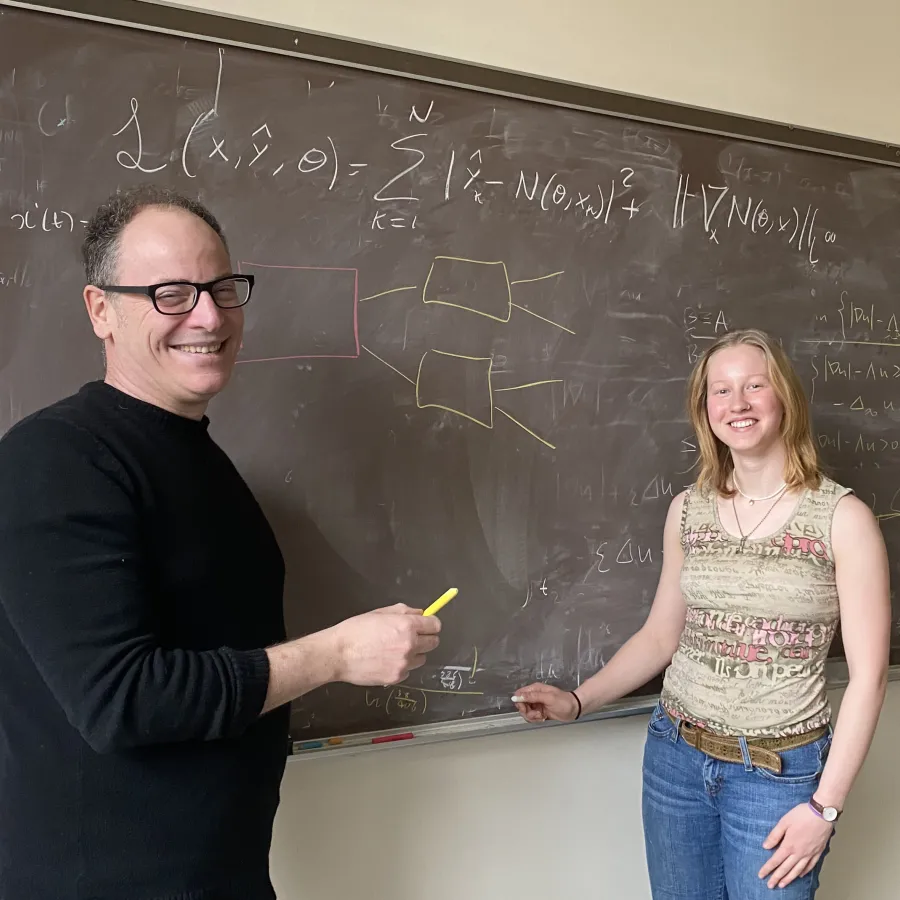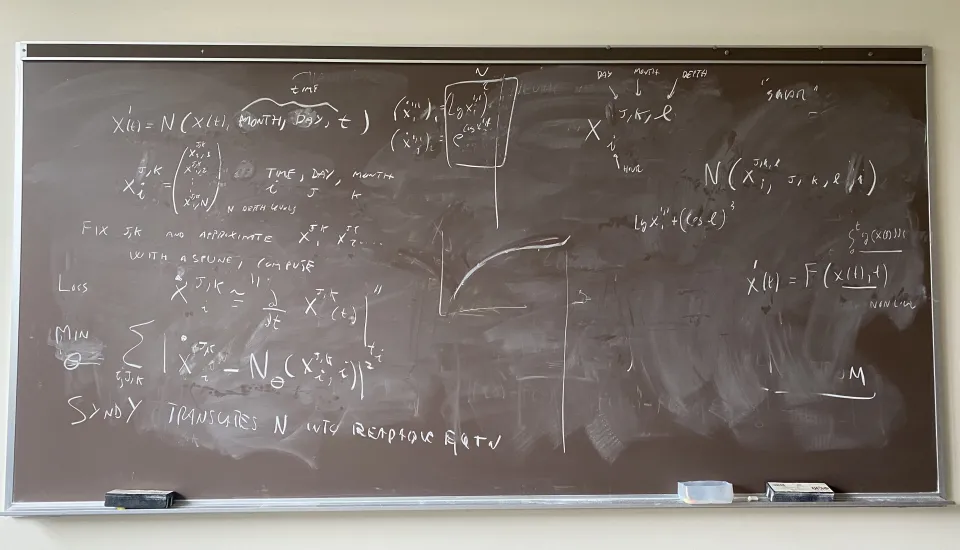A New Approach to Quantitative Data
CEEDS Research
Professor Luca Capogna and Abi Bowering ’24 are using artificial intelligence to inform Smith’s geothermal project.

Published April 19, 2024
Luca Capogna came to Smith in 2021, after serving as professor and head of the mathematical sciences department at Worcester Polytechnic Institute. Capogna was happy at WPI, but he still felt compelled to submit a single job application to Smith in 2020. What drew him 66 miles west was the collegiality of the faculty and Smith’s historic commitment to educating women, particularly women in STEM. Capogna says about his colleagues at Smith, “Everybody buys into the mission of not only helping our students, but also increasing diversity, equity and inclusion in the mathematical sciences, at Smith as well in the society at large. So, we are all working together towards a common goal, which makes you happier to go to work every day.”
Capogna is currently serving as chair of mathematical sciences at Smith. Among his other activities, he is working with thesis student Abi Bowering ’24 on a CEEDS-funded project related to Smith’s transition to geothermal energy. The roots of Capogna and Bowering’s project began in 2019, when a 1000-foot-deep borehole was drilled near the Smith Field House. The first geothermal project on the Smith campus, the borehole was installed as a test well to demonstrate the potential of geothermal energy at Smith. Almost immediately, associate professor of engineering Denise McKahn and her students began to gather data from the borehole, particularly about the geophysical conditions deep underground and how they would affect the geothermal heat produced.
When Capogna arrived at Smith in 2021, he learned that McKahn had been working on data from the test borehole for several years already and saw “a potential gold mine for experimental data.” He also saw potential for collaboration. In recent years, Capogna has become increasingly interested in a particular kind of artificial intelligence called deep learning. In talking with McKahn, he saw the possibility of using the data that she and her students had gathered in a different and hopefully complementary way via deep learning.
Up to that point, McKahn herself had been writing equations that would model the heat exchange inside the borehole. In other words, she created a mathematical model with which to analyze the data. The mathematical model is critical because, Capogna says, you can “use it to make forecasts for how heat will change depending on various parameters . . . And then once you have this quantitative handle on how things work, you can try to design the best possible borehole to make the whole system more energy efficient.”

Photo by Abi Bowering ’24
Capogna and Bowering’s project uses deep learning to create an alternative mathematical model, one that ignores human knowledge (and possible human bias) and works solely on the data. Capogna describes this type of artificial intelligence as a system “designed in order to start from data and derive mathematical equations that are supposed to describe the system out of which those data were measured.” Their aim has been to design “an algorithm that would reconstruct, ideally, equations describing the same dynamics” as the ones McKahn had derived. Capogna describes it as “an alternative approach to get a quantitative handle on the complicated physics inside each one of these boreholes.” One advantage to this method is speed, and Capogna points out that when it comes to our rapidly changing climate, speed is of the essence. Capogna hopes that eventually, they will get to the point where they can “close the loop” and match the results from deep learning with McKahn’s engineering results and “see if we can get some insight between the two.” The longer-term hope is that using this method will help to make geothermal heat exchange systems—at Smith and elsewhere—work as efficiently as possible.
Bowering will be graduating this semester, so Capogna will have to continue the project in her absence, though he hopes that there will be more students interested in working with him on this project. In addition to appreciating his Smith faculty colleagues, Capogna is also a fan of the students. He describes them as very engaged and having “an unquenchable thirst for learning.” Capogna is also cognizant that only about 21% of tenured mathematics faculty nationwide are women. In teaching at Smith and working with its engaged and motivated student population, he considers each new math student “a victory towards the goal of increasing representation of women in mathematics.”